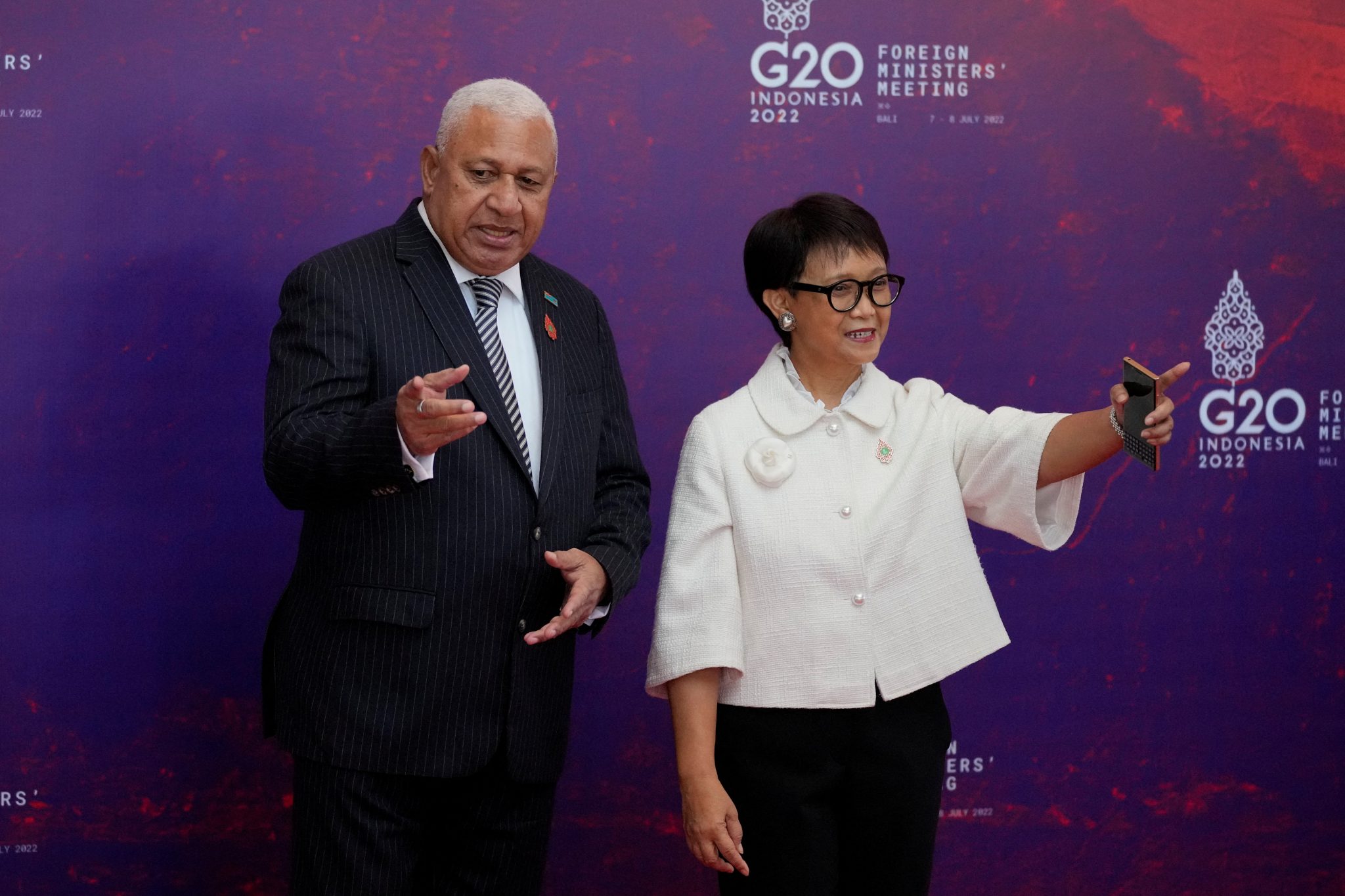Author: Editorial Board, ANU
Name the region: a group of internally diverse states, lying across strategically significant maritime passages, whose cultures and political systems have been profoundly shaped by colonialism and conflict, and who now seek to overcome chronic development challenges in partnership with major economic powers while avoiding becoming pawns in their geopolitical competition.
If you guessed either ‘the Pacific’ or ‘Southeast Asia’, well, you’d surely be right.
Anna Powles and Joanne Wallis highlight some parallels between the South Pacific and Southeast Asian regions in our lead article this week. They canvass possibilities for entrenching the momentum of the Pacific and its major-power stakeholders in shoring up Pacific regionalism at the recent Pacific Islands Forum in Fiji. They propose that Forum members ‘might look for inspiration from [its] Southeast Asian counterpart, ASEAN, for ideas on how to act as both a buffer and a bulwark in the face of geopolitical rivalry’, possibly via a new platform for Pacific Islands Forum dialogue partners to join with core members in a dialogue on security issues, similar to that of the the ASEAN Regional Forum.
For all its faults, ‘ASEAN has played a significant role, despite criticism, in acting as a fulcrum around which big power jostling is stabilised’. Critics may scoff at the lip service paid to ASEAN centrality, but ASEAN centrality has the effect of binding external stakeholders into ASEAN’s modus operandi. To a considerable extent the rhetoric creates its own reality. But its external partners ‘have been slower to recognise the centrality of the Pacific Forum’, they warn.
ASEAN centrality comes from the member states creating a grouping that is larger than the sum of its parts and using it to manage their relationships with large and powerful neighbours. Both rich Singapore and large Indonesia use ASEAN to maintain strategic policy space: through ASEAN they avoid narrowing their options. The organising principles of multipolarity and multilateralism that mean equal treatment among ASEAN members and equal treatment between ASEAN states and their dialogue partners help to sustain intra and extra-regional cooperation. The Pacific has a lot to learn from how ASEAN organises itself around its Treaty of Amity and Cooperation. The Treaty of Rarotonga, which formalises a nuclear-free weapons zone in the South Pacific and bans the use, testing and possession of nuclear weapons within the region, is a potentially powerful framework on which to premise dealings with outside powers. So too is the region’s abiding concern about the impact of climate change on the security of its peoples.
Certainly, the building blocks of Pacific regionalism — the member states — are not as sturdy as in Southeast Asia. The immensity of their development challenges, well-understood by regional political elites, necessitates engagement with outside partners who can deliver the infrastructure needed to kickstart activity in sustainable natural resource extraction and tourism, the industries most likely to give the region’s poorest economies an economic boost. The principal outside partner in this respect is undoubtedly China — and in Powles and Wallis’ judgement, ‘Western partners fail to recognise that China is a longstanding partner in the Pacific that cannot be ignored’.
Western stakeholders now see an expanding Chinese aid and investment footprint entirely as a vector for PRC state influence. It is. But the correct response is not to waste diplomatic capital or resources trying to deter Pacific countries from expanding the commercial and aid relationships with China that are going to be such an important part of building their economies into the future. Do Western officials really look like they have their Pacific interlocutors’ best interests in mind whenever they tell them to keep China at arm’s length in spite of those economic opportunities?
The best — and probably the only — realistic option for Western stakeholders is to equip Pacific governments and civil society with the tools to ensure that individual governments’ engagement with China is conducted on terms that maximise the benefits for Pacific economies while mitigating the impacts on local sovereignty and their natural environments. The relationship, in either direction, between democracy and Chinese influence across Asia isn’t at all clear-cut — but the Pacific is one place where healthy democracies, if they act collectively, will be a bulwark against the excesses of Chinese investors’ and state bodies’ behaviour and where there is still an important chance to engage Chinese government support and goodwill in ameliorating these problems. The best show of solidarity with Pacific Island societies that Australia, New Zealand, the United States or Japan can extend is to redouble their support for building robust governance standards as well as healthy civil societies and strong independent media across the Pacific and building the local skills and capacity through greater access to higher education and labour markets.
The other priority is to maintain respect for Pacific leadership in consolidating the norms and institutions of Pacific regionalism — even if that means accepting, as it certainly will, a role for China as a stakeholder in this process if the region desires it. The worry, Powles and Wallis write, is that ‘new mechanisms such as the Partners in the Blue Pacific initiative — designed to facilitate cooperation between the United States, Australia, New Zealand, the United Kingdom and Japan — risk sidelining or duplicating regional solutions’ out of an eagerness to write China out of such processes.
The analogies with the Quad, which some worry undercuts its members’ rhetorical commitments to ASEAN centrality, draw themselves. With Pacific regionalism still inchoate by comparison, all parties have much to learn about what to avoid as well as what to pursue from comparison to the decades-long experiment in regionalism to the Pacific’s northwest.
The EAF Editorial Board is located in the Crawford School of Public Policy, College of Asia and the Pacific, The Australian National University.





















Discussion about this post